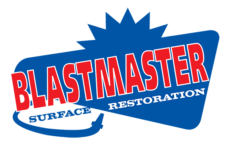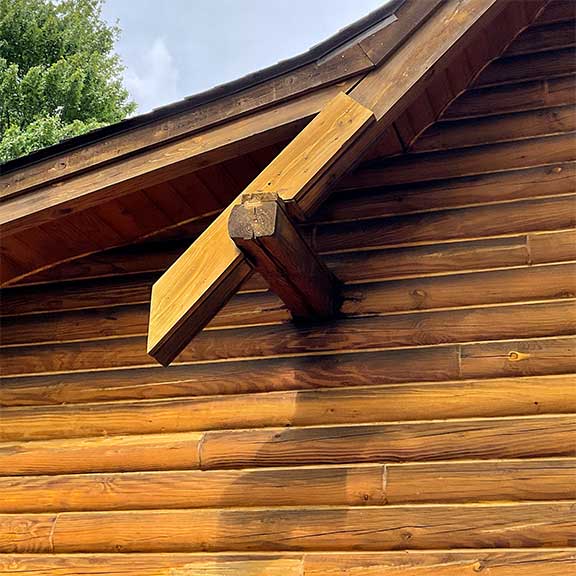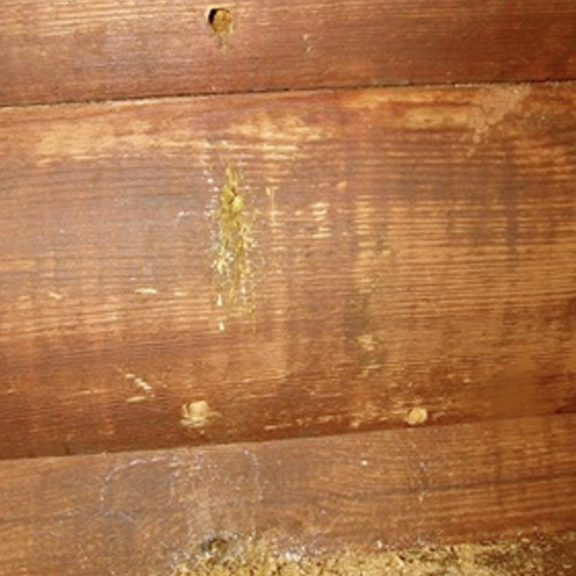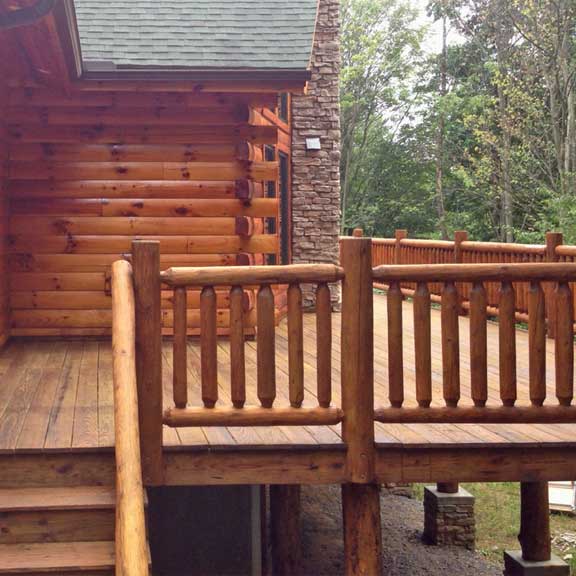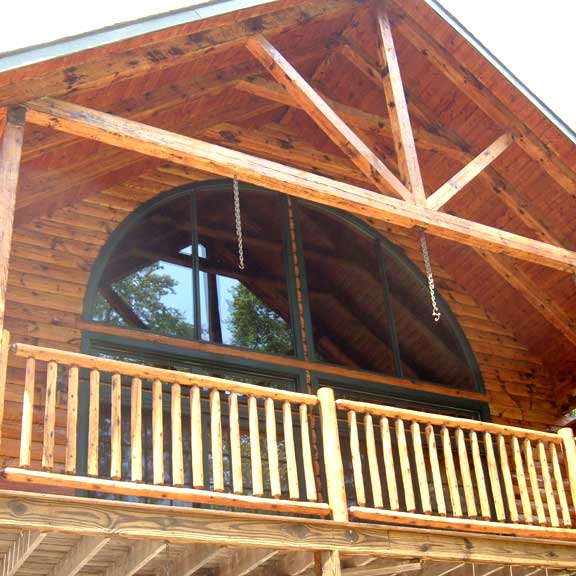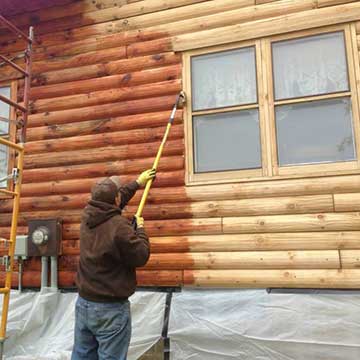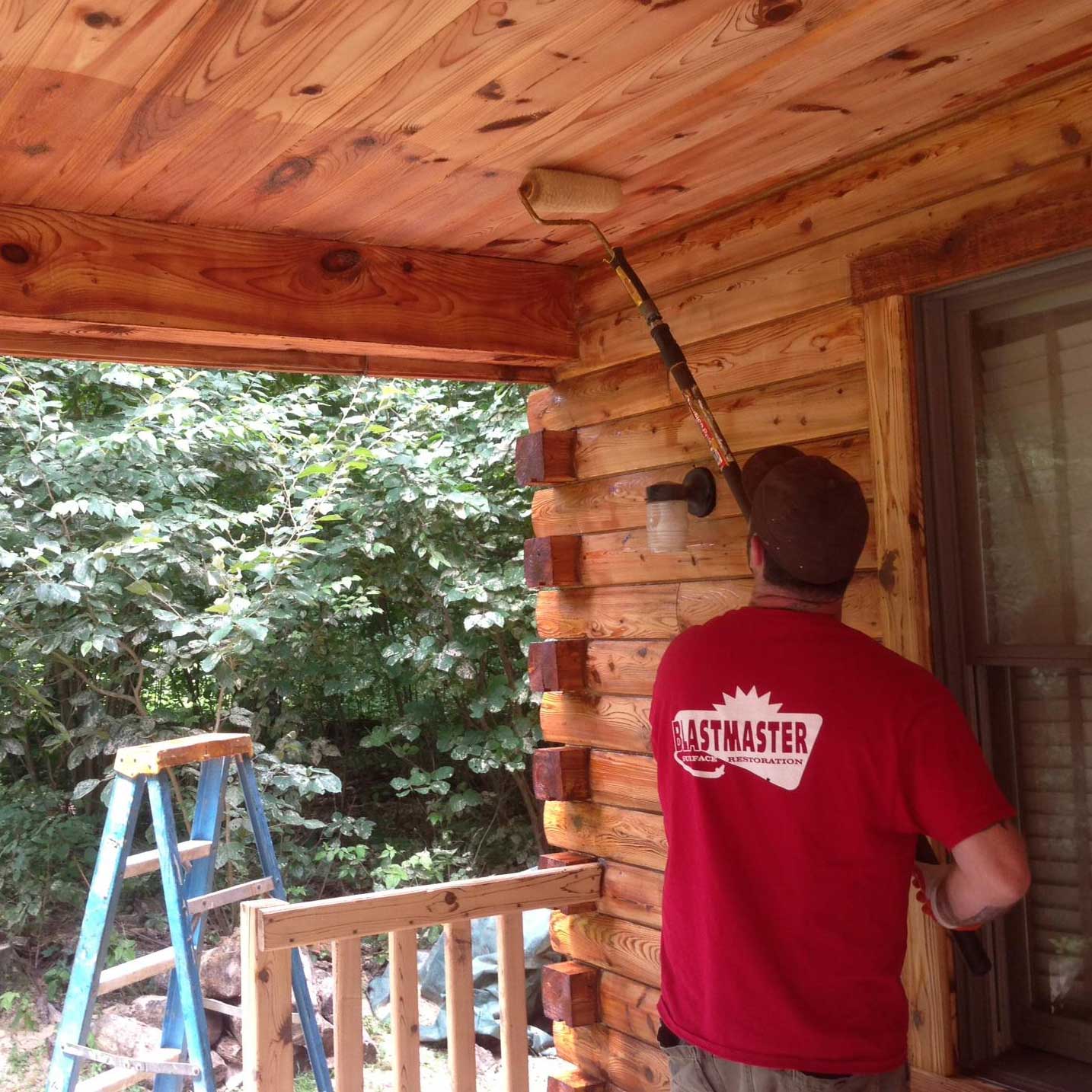ARTICLES
Caulking
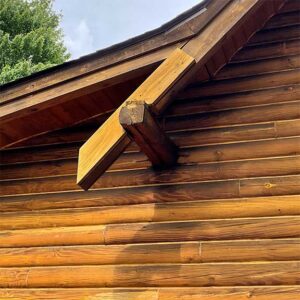 Log homes by nature are imperfect. While they are beautiful, they are made of organic materials that expand and contract and sometimes twist and even crack. So does your log home need to be caulked? If so, When? Where? And how often? Should you caulk between every log? Only the corners? What type of caulk should be used? How about checks? Let’s look at some of these questions.
Log homes by nature are imperfect. While they are beautiful, they are made of organic materials that expand and contract and sometimes twist and even crack. So does your log home need to be caulked? If so, When? Where? And how often? Should you caulk between every log? Only the corners? What type of caulk should be used? How about checks? Let’s look at some of these questions.
First and foremost, let’s practice a bit of common sense. Can you see light through the gaps between logs? Could the wind blowing through your home blow out a candle? If yes, then you obviously, definitely, without a doubt need to do some caulking. Otherwise, it is generally recommended that new log homes be allowed to dry completely before being too concerned about caulking. However, it is also recommended that logs be caulked between each course after a log home has reached 10 years old. Although most log homes are built with gaskets or seals between each log, after logs move and settle, those seals are often compromised. Additionally, corners are notorious for allowing air into the house. Make sure that special attention is paid to corners, and around doors and windows. Caulking your home can also help to keep heating and cooling costs down.
The type of caulk used is very important! Unless you want to remove and replace caulk frequently, only quality log home caulks should be used. Tub and tile caulk, window and door caulk or any other type that is not made to hold up against U.V. damage will not last long on a log home! Using a caulk designed for log homes will ensure that the home remains sealed for a longer period of time. Most log home caulks are designed to last 20-25 years. Even so, sometimes it is required to touch up areas where the logs have shrunk or shifted. Additionally, log home caulks come in a variety of color tones so that it doesn’t stand out.
Using a backer rod to fill larger gaps before caulking is also crucial to maintaining a tight seal. Gaps that are larger than 1/4” really should have backer rod placed in them prior to caulking.
How about checks? Checks are the cracks that sometimes develop as logs begin to dry out. There are two simple rules regarding checks. First, until a check is at least 3/16”, it is usually not worth caulking them. There is a good chance they may not get any larger, and if they do, they can be addressed at that time. Second, the only checks that really need to be addressed are those on the upper half of logs where water can pour into them. Checks on the underside of a log rarely need to be addressed as water generally will not run up into them.
Finally, should you use caulking or chinking? Modern chinking materials have very similar characteristics to caulking, only they are made to handle larger gaps. If you need to fill gaps larger than 1/2” we recommend chinking, but for most homes, caulking is sufficient.
Carpenter Bee Control
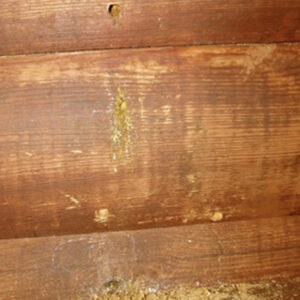 Carpenter Bees and log homes are not a pleasant combination for the log home owner. Unfortunately, the bees do not agree. Carpenter bees bore holes approximately ½” in diameter in which to lay eggs. The bees can do a great deal of damage as they burrow several inches in each direction turning wood into “swiss cheese.”
Carpenter Bees and log homes are not a pleasant combination for the log home owner. Unfortunately, the bees do not agree. Carpenter bees bore holes approximately ½” in diameter in which to lay eggs. The bees can do a great deal of damage as they burrow several inches in each direction turning wood into “swiss cheese.”
However, the worst damage is often caused by woodpeckers that hear the bees in the wood and go after them for a tasty meal.
Completely eradicating these pests is not always possible, however, controlling them and limiting the damage they cause is quite important to maintaining the integrity and value of your log home.
The first step in controlling carpenter bees is by applying a good quality multi-coat finish as bees typically go after untreated, unfinished wood. This step alone will greatly reduce the likelihood of bees boring new holes. If your home has a failing finish, or a very thin finish, the bees quickly penetrate through it without a problem.
If, however, you have a multi-coat finish, they are less likely to eat through it as it doesn’t “taste” like wood.
Secondly, there are numerous pesticides and powders that can be sprayed, or applied with a puffer into the bee holes. This helps to kill the bees presently in the hole, but rarely does much to kill the eggs that are still inside.
The third step is to seal up the hole to “trap” any unhatched larva from coming out after hatching. You might have already found out that caulk alone will rarely keep the bees inside. The bees are easily able to bore through caulk like they bore through wood. So, before caulking the hole, it is best to fill the hole with steel wool, or aluminum foil which is harder for them to chew through.
Deck Care and Maintenance
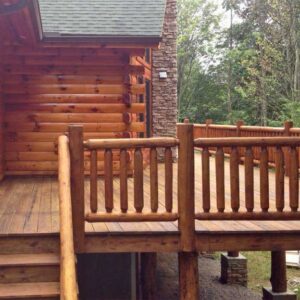 Decks and rails made of wood require a lot of maintenance. So far, there has not been a deck stain/finish created that can withstand the wear and tear of foot traffic, the UV damaging sun rays, the constant bombardment of rain, snow, hail, bird droppings, mold and pollen and everything else without needing to be recoated rather frequently. Even high quality finishes need to be re-coated usually every 2 years or so. But, here are a few tips to help keep your deck and rails looking their best.
Decks and rails made of wood require a lot of maintenance. So far, there has not been a deck stain/finish created that can withstand the wear and tear of foot traffic, the UV damaging sun rays, the constant bombardment of rain, snow, hail, bird droppings, mold and pollen and everything else without needing to be recoated rather frequently. Even high quality finishes need to be re-coated usually every 2 years or so. But, here are a few tips to help keep your deck and rails looking their best.
First of all, do not make the mistake of putting a finish designed for log walls on your deck. Although there are a few finishes available that are labeled for both, most finishes designed for walls are not intended for the heavier traffic and weather that the deck and rails see. We often observe decks/rails that have been treated with a multi-coat finish that looks beautiful initially, but as it weathers, it begins to crack and allow moisture to penetrate beneath the surface thus causing the finish to peel and flake. Once this occurs, it must be removed prior to recoating which is typically rather expensive and labor intensive. A good deck stain is typically a thin one or two coat penetrating finish that will slowly wear away rather than crack and flake.
Secondly, decks/rails need to be cleaned regularly. Since decks are horizontal, they collect everything (kinda like my desk) from dirt, mold and pollen spores to leaves and bird droppings. Cleaning regularly will limit the damaging effects of these unwanted environmental additives.
Be sure to shovel off your deck before the spring thaw! Often people underestimate the damaging effects of snow upon their deck’s finish. During the cold harsh winter, snow tends to pile up on decks and is often neglected. While it remains frozen, it doesn’t do a great deal of damage. However, as spring rolls around and the snow slowly melts and the decks and rails remain saturated for days and even weeks, then re-freezing and thawing again, the finish is being damaged. Shoveling off heavy snow can keep this from happening and help the finish hold up longer. Be sure to use a plastic shovel and be careful as not to scratch off any of the finish.
Finally, expect to re-coat approximately every other year to keep your decks/rails looking their best and protecting them for years to come.
HELPFUL HINTS
 Before cob blasting your log home:
Before cob blasting your log home:
1) Part of the beauty of a log home is the slight imperfections (knots in the wood, slight color variations in the wood grain, etc.). These imperfections also create cracks, gaps and spaces between logs and around doors and windows. Therefore, try as you might, if you choose to have your home cob blasted, you will have dust enter your home. Now, personally, I’d much rather have a bit of harmless dust find its way in the house rather than chemicals or water from stripping or pressure washing. Being aware of this, it is recommended that before having your home cob blasted that you cover furniture and electronics with sheets/drop cloths to protect them. Also, you may wish to hang plastic sheeting around the perimeter walls in order to limit dust from covering everything in the house. Finally, have a good vacuum on hand to clean up the mess afterwards.
2) If you are planning new landscaping around the home, it is best to wait until after blasting and sealing the home. While we try to catch as much of the spent blast media as possible, it is impossible to catch it all. Since it is 100% natural, it will mix in with the lawn/mulch rather quickly, but its easier to do your landscaping once rather than having to do it twice.
3) Have all light fixtures, signs, address numbers etc. removed before cob blasting. This will save a great deal of time for the blaster.
4) Realize that stain and sealer takes differently to each log. While cob blasting gives a generally uniform look to the home overall, there are areas and spots (mostly around knots) that the stain may not come off completely. Also, areas that are not subject to sun and weathering (i.e. porches, overhangs, etc.) may remain somewhat darker than areas that are subject to the weather. However, when a new stain is applied, the difference is not usually evident.
5) Understand that restoring your log home is a process. The time it takes to blast your home and then to have it stained and sealed depends on several factors. Certainly the size of the home is the single greatest factor, but other factors include the type, quality, and condition of the finish currently on the home, and the weather (rain delays stink!). Keeping these things in mind, the blast process alone can take anywhere from a couple days to a few weeks and then the home still has to be stained and sealed. The good news is, when done right, you shouldn’t have to have your home blasted again for a long, long time.
